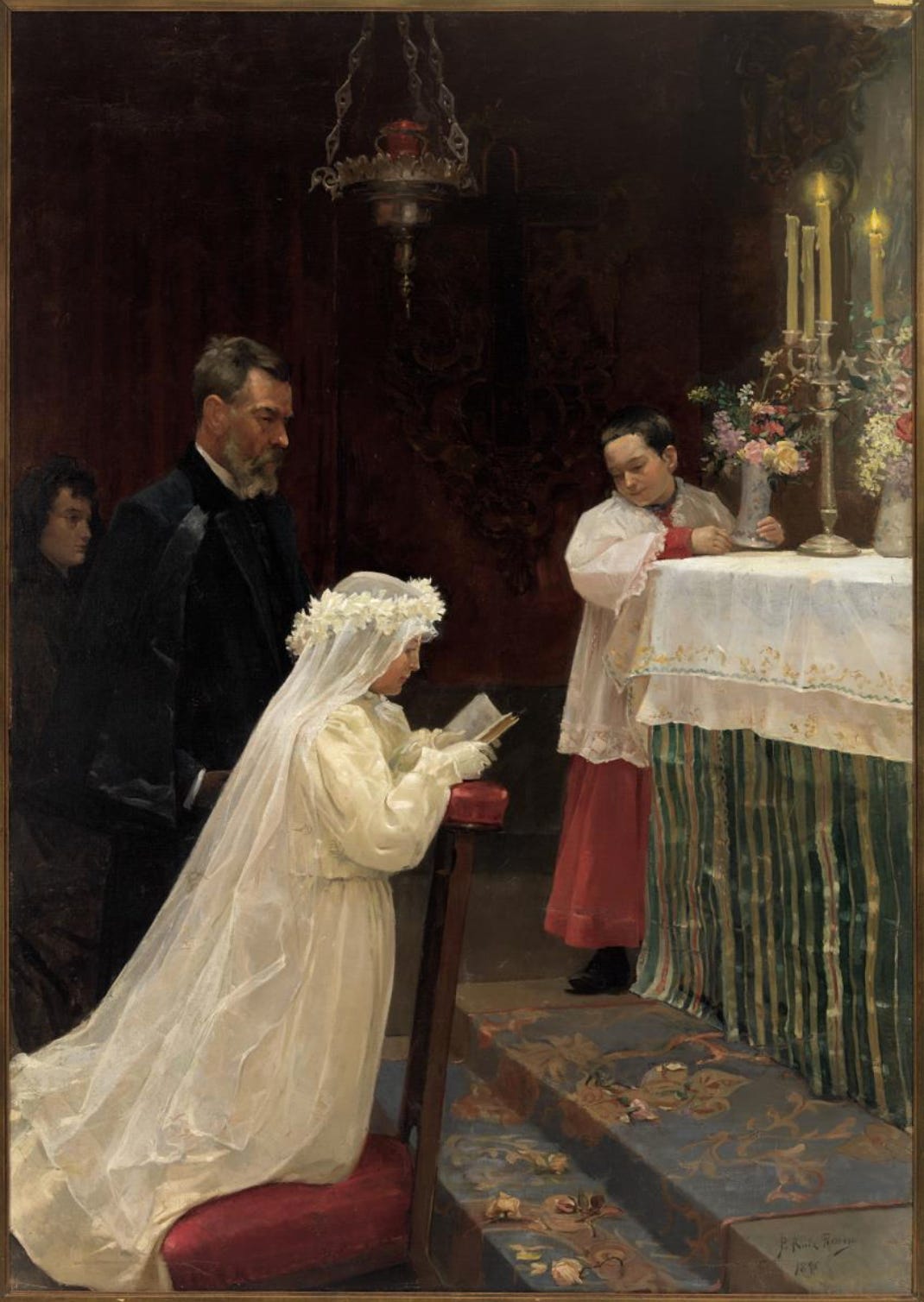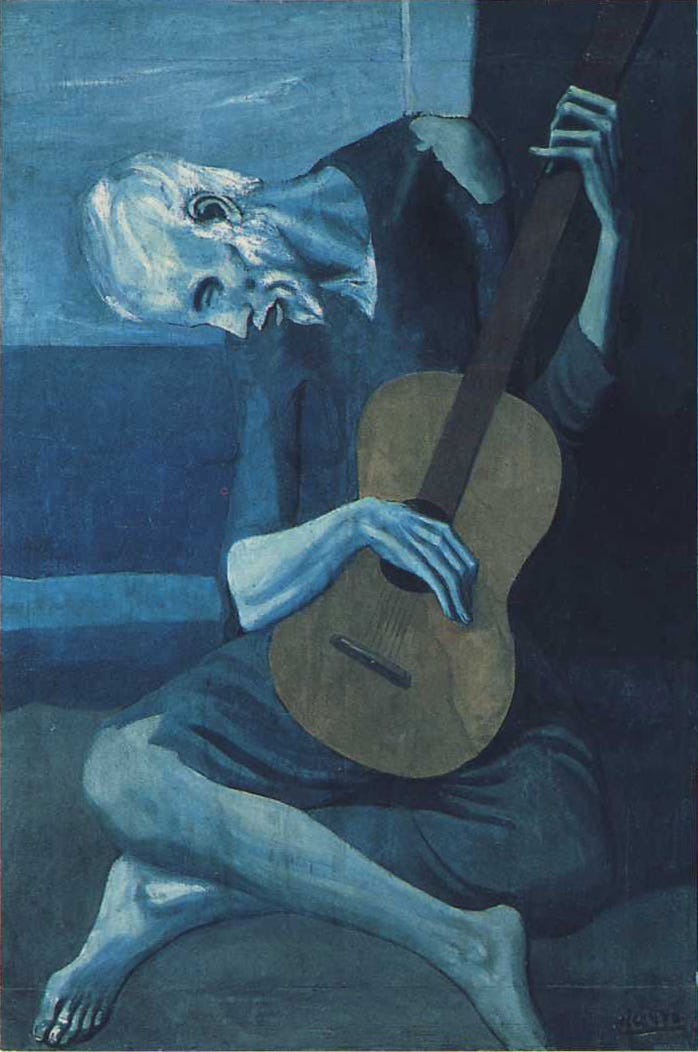Chance Encounters, Edition 3
Looking at Picasso, Part 1
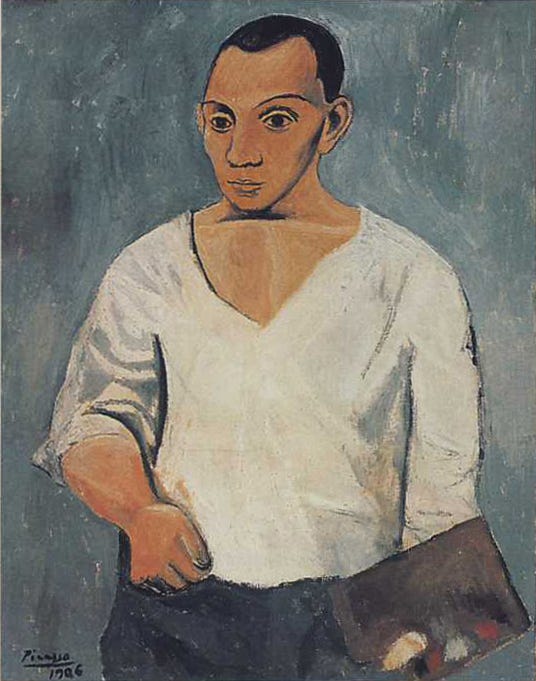
2023 is the 50th anniversary of the death of Pablo Picasso and dozens of exhibitions and other events are scheduled throughout the year. Chance Encounters is observing this milestone in a series dedicated to Picasso’s career, influence, and some of the questions surrounding the artist’s legacy. In the first of the series, I share some information about Picasso’s life and early career.
Pablo Picasso was born in Málaga, Spain in 1881. His father was a painter and a professor of art. Picasso showed impressive talent as a young student of his father and at the Barcelona Academy of Fine Art. First Communion, depicting his sister Lola, was painted when the artist was about 15 and shows his early mastery of the realistic illusionism popular in painting academies at the time. Beginning the following year (1897), the young artist studied in Madrid, briefly attending the Real Academia de Bellas Artes de San Fernando (Royal Academy of Fine Arts of San Fernando), before abandoning his classes in favor of studying the masters of the past at the Prado and elsewhere in the city. Then in 1900, Picasso made his first visit to Paris, the artistic capital of Europe, where he encountered art that rejected the traditions he had studied.
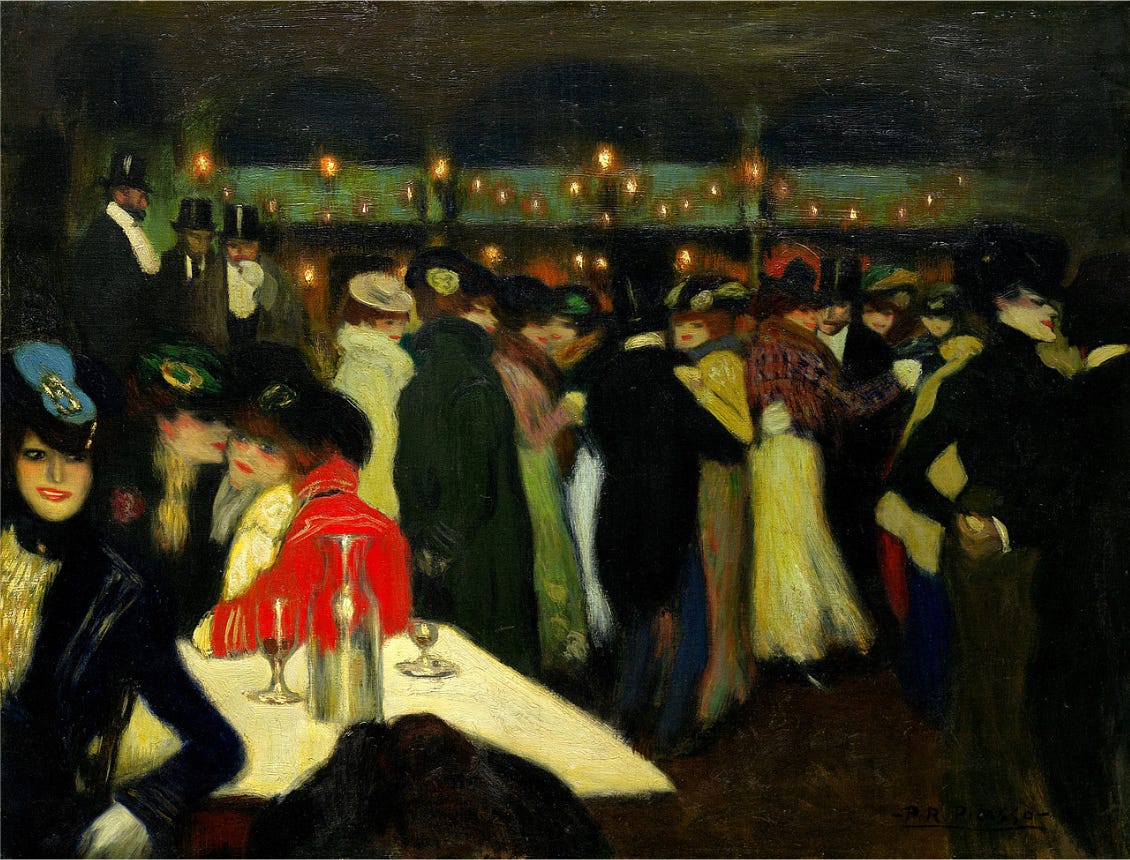
Living alternately in Madrid, Barcelona and Paris, Picasso began to imitate and internalize the styles in use in Europe at the time. In La Moulin de la Galette from 1900, the artist has chosen a popular Parisian subject, the windmill-turned-restaurant and dancehall previously depicted by Pierre-Auguste Renoir, Vincent van Gogh, and Henri de Toulouse-Lautrec, among others. The influence of Toulouse-Lautrec is apparent in the caricatured female face near the left edge, while the overall dark tone of the painting is evidence of Picasso’s admiration of the Spanish Baroque painting he had encountered in Madrid’s museums.
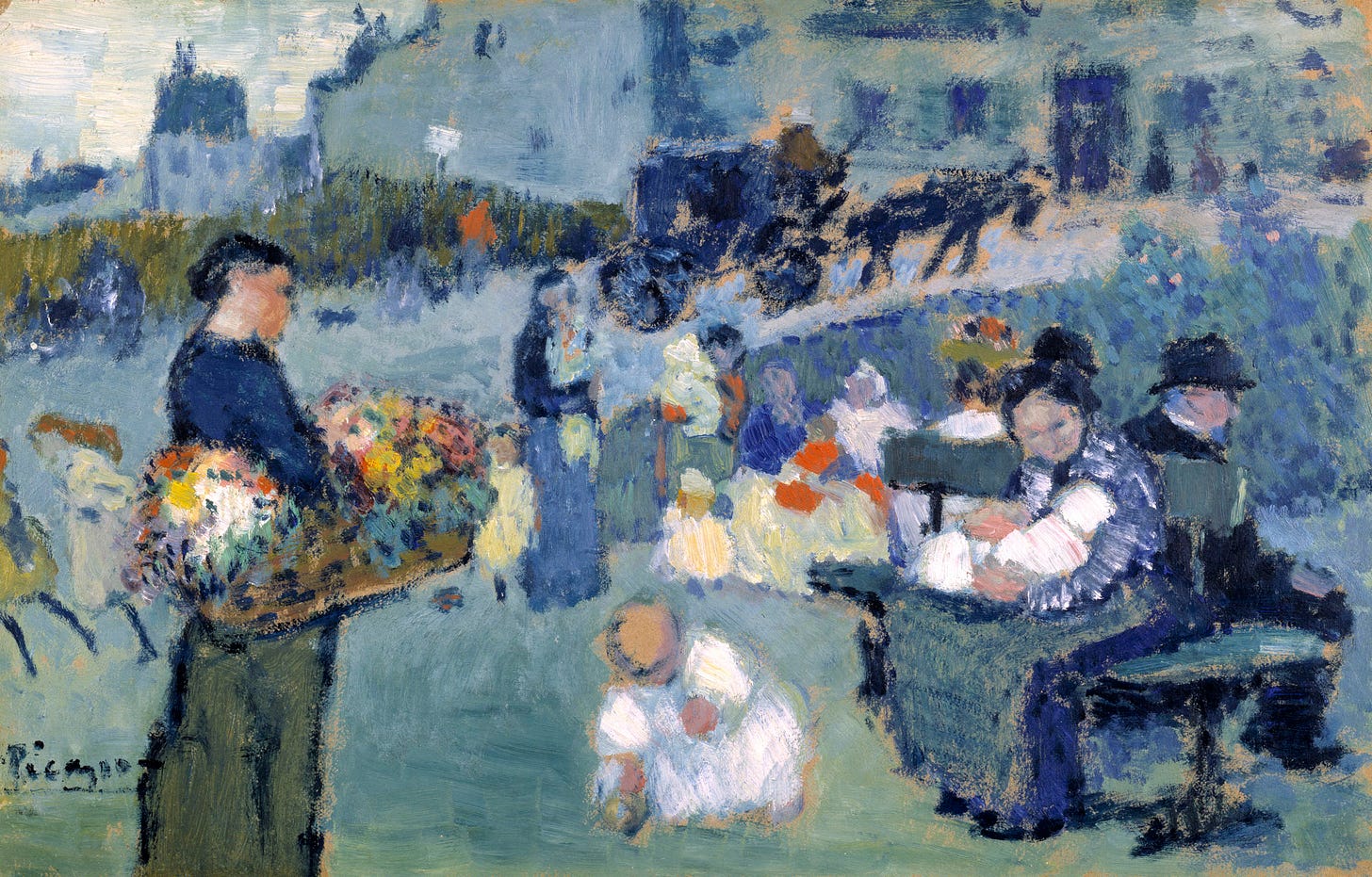
In contrast to the previous painting, The Flower Seller, painted just a year later, shows Picasso imitating the styles of the Impressionists and Post-Impressionists. The bright colors, mundane subject, and vaguely pointillist technique remind me of artists like Camille Pissarro, Georges Seurat, and Vincent van Gogh. As these two and other works from around the turn of the century show, Picasso was experimenting with the many styles and subjects he was discovering in Paris.
Around 1901, Picasso developed the Blue Period style which is considered his first mature style. The Old Guitarist is typical of the works the artist created in this phase of his career, with the figure’s emaciated, sorrowful demeanor and the work’s monochromatic blue palette dominated by dark tones. Several life events influenced Pablo Picasso’s shift to the Blue period. The most important of these, according to the artist himself, was the death by suicide of his friend Carles Casagemas. In addition, Picasso suffered from depression at this time; he had failed to sell much work and was living in severe poverty. Traveling in Spain and living among the poor in Paris, Picasso was drawn to others who were suffering conditions similar to his own and these figures served as models for the Blue Period works. Finally, beginning around 1904, some of the Blue Period works began to sell.
In 1904, Picasso changed his style, initiating his Rose Period, which lasted until 1906. Part of this change is thought to be connected to Picasso’s romantic relationship with Fernande Olivier which began around the same time. As with the preceding style, the name Rose Period is derived from the artist’s palette which was dominated by pink shades. The figures are less emaciated and themes of circus and theatrical performers are common. Many of the paintings from the Rose Period lack any clear setting, with the figures, as in La Coiffure, grounded by their poses rather than by architectural or landscape elements. To me, the Rose Period paintings convey a serious and thoughtful quality, with a more nuanced emotional range than Picasso’s earlier works.
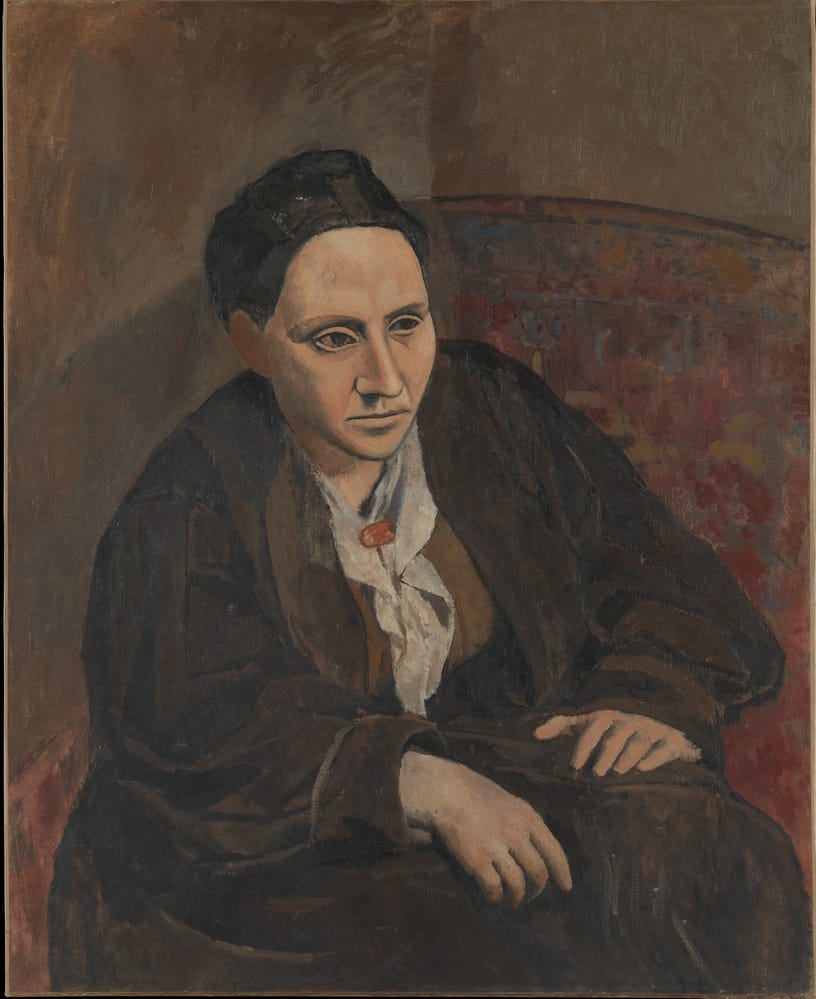
The Rose Period also coincided with Pablo Picasso’s growing friendship with American art collectors Leo and Gertrude Stein, and through them with other collectors of avant garde art. Through these contacts, Picasso began to sell more work, developed relationships with artists, writers and dealers, and became an established member of the Parisian art world. Portrait of Gertrude Stein is considered a landmark work in Picasso’s career, but is also noted as a powerful rendering of the personality of its subject, a writer and force for innovation in Western culture. In this audio clip, we hear Stein reading one of her poems and experience her stream-of-consciousness repetitive approach to language.
According to Stein, Picasso took as many as 90 sittings for the portrait before becoming frustrated with and painting out the face. He then repainted that section of the painting without Stein’s presence. Even in reproduction we can see that the face is painted more firmly and seems almost mask-like in comparison to the softly blended color of the rest of the painting. These characteristics hint at the dramatic changes Picasso would soon introduce to his work, leading eventually to the geometric shapes and distortions of the Cubist movement.
In the next essay about Picasso, we’ll look at the momentous and infamous painting Les Demoiselles d’Avignon. In the meantime, I’ll return with some contemporary international art for our appreciation.
All paintings © Estate of Pablo Picasso / Artists Rights Society (ARS), New York.


